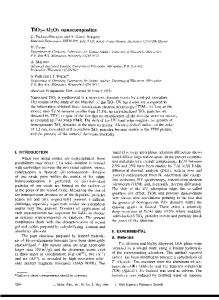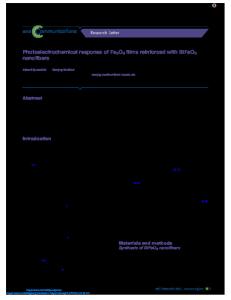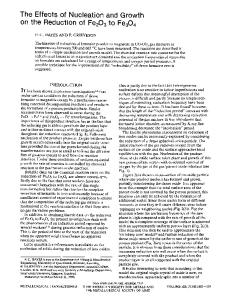Design of multi-layered TiO 2 -Fe 2 O 3 photoanodes for photoelectrochemical water splitting: patterning effects on phot
- PDF / 779,651 Bytes
- 7 Pages / 612 x 792 pts (letter) Page_size
- 45 Downloads / 373 Views
Research Letter
Design of multi-layered TiO2–Fe2O3 photoanodes for photoelectrochemical water splitting: patterning effects on photocurrent density Myeongwhun Pyeon, Department of Inorganic Chemistry, University of Cologne, Greinstr. 6, 50939, Cologne, Germany Meng Wang, Department of Inorganic Chemistry, University of Cologne, Greinstr. 6, 50939, Cologne, Germany; State Key Laboratory of Multiphase Flow in Power Engineering, International Research Center for Renewable Energy, Xi’an Jiaotong University, Shaanxi 710049, China Yakup Gönüllü, and Ali Kaouk, Department of Inorganic Chemistry, University of Cologne, Greinstr. 6, 50939, Cologne, Germany Sara Jäckle, and Silke Christiansen, Helmholtz-Zentrum Berlin für Materialien und Energie GmbH, Hahn-Meitner-Platz 1, 14109 Berlin, Germany; Max-Planck-Institute for the Science of Light, Günther-Scharowsky-Str. 1, 91058 Erlangen, Germany Taejin Hwang, Korea Institute of Industrial Technology (KITECH), 320 Techno sunhwan-ro, Yuga-myeon, Dalseong-gun, 711-880 Daegu, South Korea KyoungIl Moon, Heat Treatment R&D Group (Siheung Ppuri Technological Supporting Center), Korea Institute of Industrial Technology (KITECH), 113-5 Seohaean-ro, Siheung-si, 429-450 Gyeonggi-do, South Korea Sanjay Mathur, Department of Inorganic Chemistry, University of Cologne, Greinstr. 6, 50939, Cologne, Germany Address all correspondence to Sanjay Mathur at [email protected] (Received 13 July 2016; accepted 24 October 2016)
Abstract We report the effect of patterning on photoelectrochemical (PEC) water-splitting performance. Oxide–oxide heterostructures based on horizontal and vertical heterojunctions were fabricated on transparent conductive oxide glass by sequential plasma enhanced chemical vapor deposition (PECVD) of individual metal oxide. Featured masks were employed to enable three-dimensional patternings of stripes and cross-bars structures formed by Fe2O3 and TiO2 layers. PEC measurement was carried out by a three-electrode cell. It was found that double layered TiO2// Fe2O3:FTO showed a decrease in PEC performance when compared with single Fe2O3:FTO layer, whereas triple-layered Fe2O3//TiO2//Fe2O3:FTO (both patterned and unpatterned samples) displayed enhanced photocurrent density. The results show that the existence of multiple phase boundaries does not always add up to PEC enhancement observed in single heterojunction.
Introduction Impetus for new technologies for renewable energy has escalated with increasing global energy demand. From clean and renewable view point, hydrogen has attracted significant interest as a promising method for energy storage since it does not contribute to the greenhouse effect when it is produced in clean and renewable way. Although there are technical approaches to produce hydrogen by electrolysis[1] or thermolysis,[2] the energy required for H2 production generally results from fossil fuel or coal-based sources.[3] In this context, hydrogen production from photoelectrochemical (PEC) water splitting using earth abundant material and solar energy is
Data Loading...











